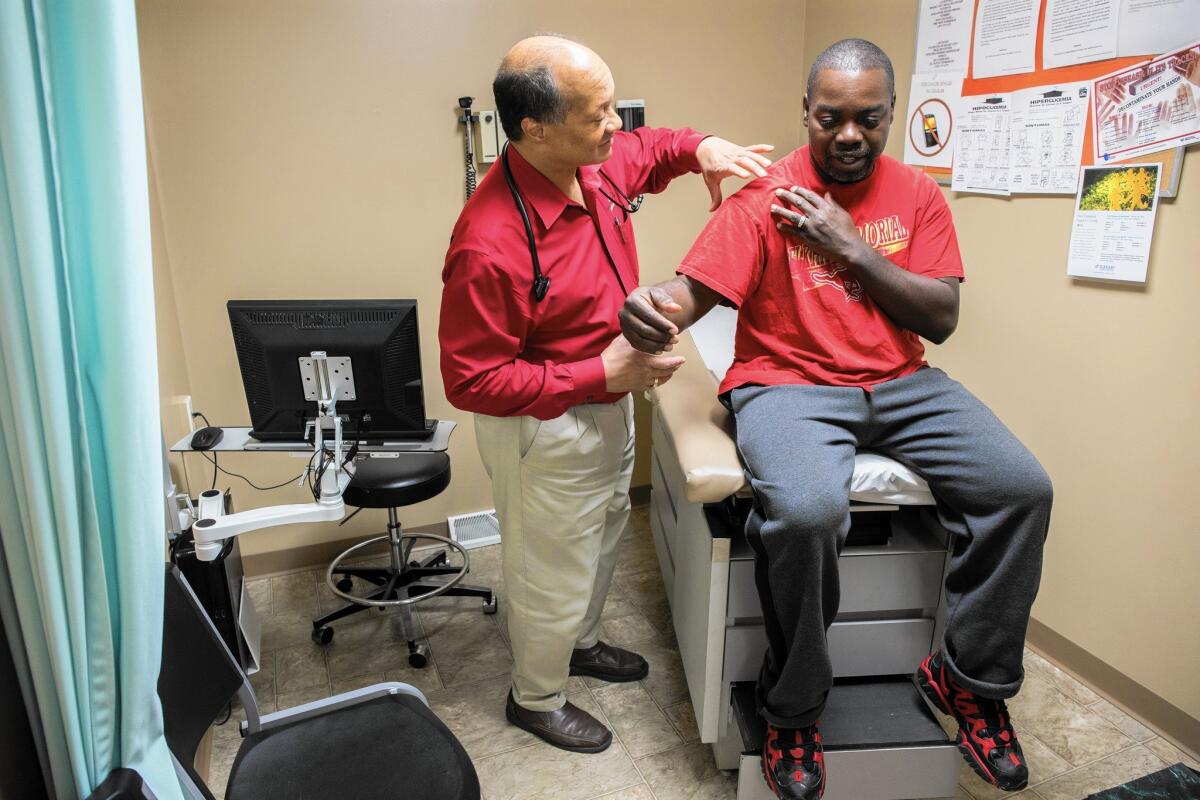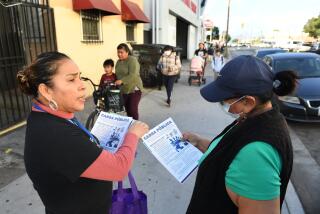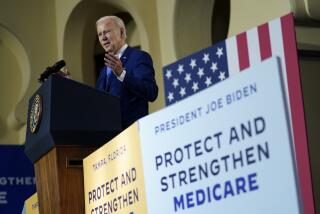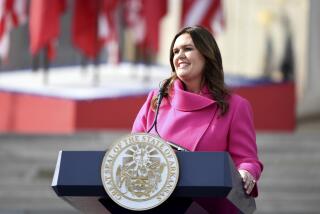Indiana’s Medicaid experiment offers a conservative take on health reform

- Share via
ELKHART, Ind. — Linda Joyner, at 64, just got health coverage.
Uninsured for years, the former waitress signed up for Medicaid after Indiana expanded its program through the Affordable Care Act. But unlike millions of low-income Americans who’ve enrolled in the government plan since last year, Joyner is paying for her coverage.
Indiana, which has a conservative Republican governor and Legislature, is pioneering an experiment that requires low-income patients to contribute monthly to a special health account. Joyner chips in $12.33.
“It’s the first thing I pay after the rent,” she said during a recent visit to a clinic in this aging manufacturing town often billed as the RV capital of the world.
Charging poor people small premiums or fees for care — long favored by conservatives who contend that “skin in the game” engages patients in their health — has historically produced mixed results.
But at a time when Obamacare remains deeply unpopular among Republicans, the idea is attracting new interest as GOP governors seek ways to put a conservative stamp on expanding coverage. Indiana’s experiment may provide a glimpse at where the health law is headed in some parts of the country.
“There are a lot of people who are looking really closely at what Indiana is doing,” said Matt Salo, executive director of the National Assn. of Medicaid Directors.
Several states, including Arkansas and Iowa, have implemented cost-sharing requirements in their Medicaid expansions. GOP officials in Utah, Arizona, Ohio and elsewhere are reviewing the idea.
Health and Human Services Secretary Sylvia Mathews Burwell said the Obama administration, which must sign off on new cost-sharing requirements, was open to more proposals from Republican governors. “We welcome the conversation,” she said, calling Indiana’s Medicaid plan “a big deal and a very important deal.”
The stakes in these discussions are high. Medicaid now provides coverage to nearly 1 in 4 Americans at an annual cost to taxpayers of more than $500 billion.
The program is growing rapidly, thanks largely to the 2010 healthcare law, which provides federal aid to states to expand Medicaid to low-income, working-age adults. (Medicaid historically served poor children, mothers and the disabled.)
Though the coverage has provided a vital safety net, Medicaid faces challenges. Patients often fare worse than privately insured Americans. And 21 states, mostly in the South and interior West, have refused to expand their programs, citing concerns about Medicaid’s effectiveness and cost.
“For us to be honest, we have to say that the Medicaid program is … in need of fixing,” said Vernita Todd, chief executive of Heart City Health Center, which operates two clinics in Elkhart serving patients who are uninsured or on Medicaid.
Todd, like many officials who work with Medicaid, has labored to get patients to checkups and other preventive care. “What we have learned is that our Medicaid population is not really very health-literate,” she said.
For years, states have tried to nudge patients to make better choices. One strategy has been to make Medicaid look more like private insurance, charging premiums, co-pays and penalties for emergency room visits.
But billing poor patients, even in small amounts, often drives them from the doctor’s office, studies show.
Enrollment in one of Oregon’s Medicaid plans plummeted by nearly half after the state in 2003 began charging monthly premiums up to $20 and co-pays up to $5. Many patients later reported skipping treatment.
Other states, including Florida, Kentucky, New Hampshire and Wisconsin, saw similar declines when they raised premiums in children’s health programs.
“People don’t get necessary care,” said Judith Solomon, a health analyst at the left-leaning Center on Budget and Policy Priorities.
Several states have since abandoned the cost-sharing strategy. Others concluded it was too expensive to administer for the poorest patients, though many states, including California, still charge small premiums and co-pays for low-income adults and children whose incomes are above the federal poverty level.
Instead of premiums, the Healthy Indiana Plan requires patients to contribute to a health savings account used for their medical expenses. Monthly contributions, based on income, range from $1 to $27.
If patients make the contributions, medical care is essentially free. People can even lower their contributions by getting recommended preventive care, such as cancer screenings.
If patients don’t contribute, they lose dental and vision coverage and must pay up to $8 to see a doctor or fill a prescription.
“The Healthy Indiana Plan … is aspirational,” said Brian Neale, the governor’s health policy director. “We believe that individuals, if offered the opportunity, will make the right choices.”
As of July 1, more than 297,000 people had enrolled; about 72% were making the required contributions, according to the state.
At Heart City Health Center, a squat brick building across the street from a factory, sign-ups have been brisk.
Joyner, who waited tables for more 40 years before her legs gave out two years ago, called the new coverage “a godsend.”
“When you get older, you start to fall apart,” she said. “I worked hard all my life, but I didn’t expect any of these health problems until I was in my 80s.... Now I don’t have to worry.”
Once dependent on charity care at a local hospital, she can now get regular attention for her rheumatoid arthritis and a painful nerve condition in her legs. The $12.33 contribution is a small price to pay, even on her $633 monthly Social Security check, she said.
“The people who need care are not demanding that it be totally free,” said Todd, the clinic director. “It takes away people’s dignity.”
Indiana’s experiment is still new, however.
Advocates for the poor worry that some patients who don’t make the contributions will end up skipping care, much as Medicaid patients in Oregon did.
“These are the people we have the most heartache about,” said Caitlin Priest, public policy director for Covering Kids & Families of Indiana.
Also unclear is whether the unique health accounts will actually improve people’s health.
Though data show that patients in an earlier version of the Healthy Indiana Plan received more preventive care than traditional Medicaid patients, there has been little research on the program’s effect on obesity, smoking and chronic diseases such as diabetes.
For now, many in Indiana say the state’s experiment may offer other lessons for parts of the country where millions of poor people remain locked out of health insurance.
“We can show conservative states that there are ways to expand coverage … that don’t just make people dependent,” Todd said.
More to Read
Inside the business of entertainment
The Wide Shot brings you news, analysis and insights on everything from streaming wars to production — and what it all means for the future.
You may occasionally receive promotional content from the Los Angeles Times.











